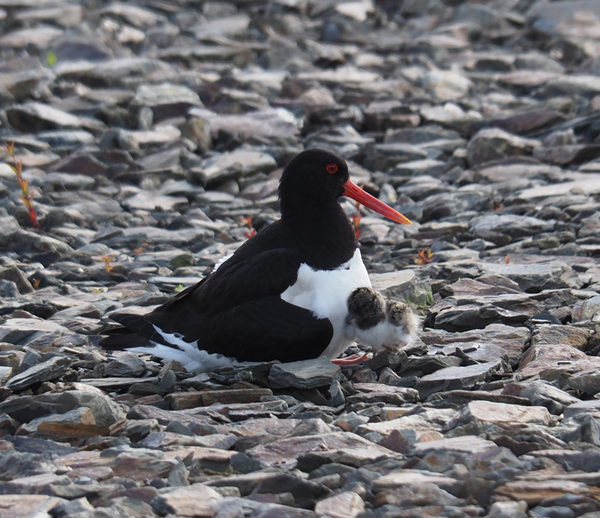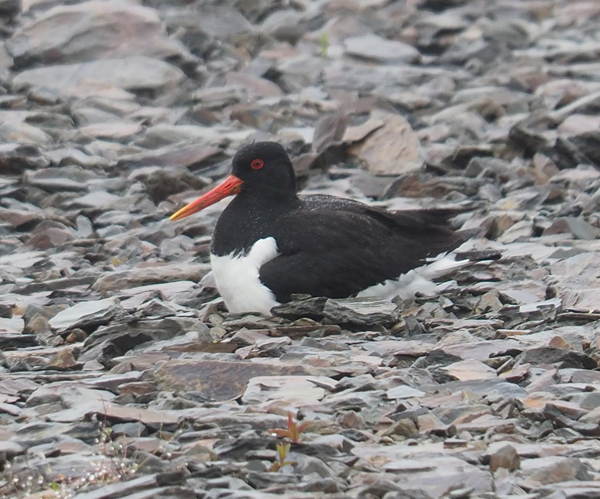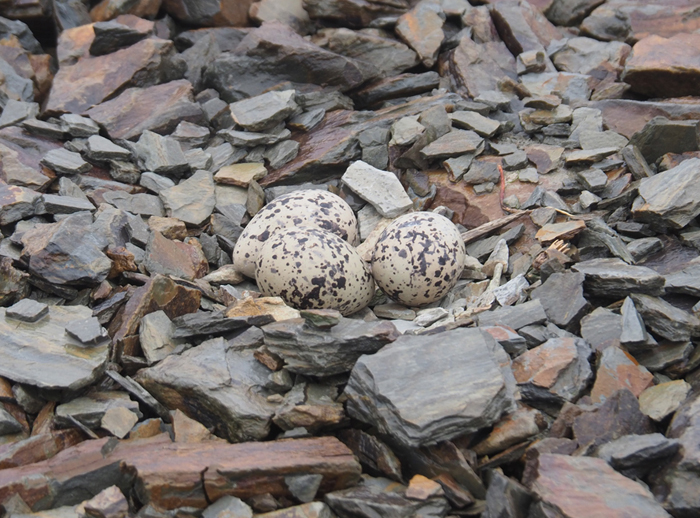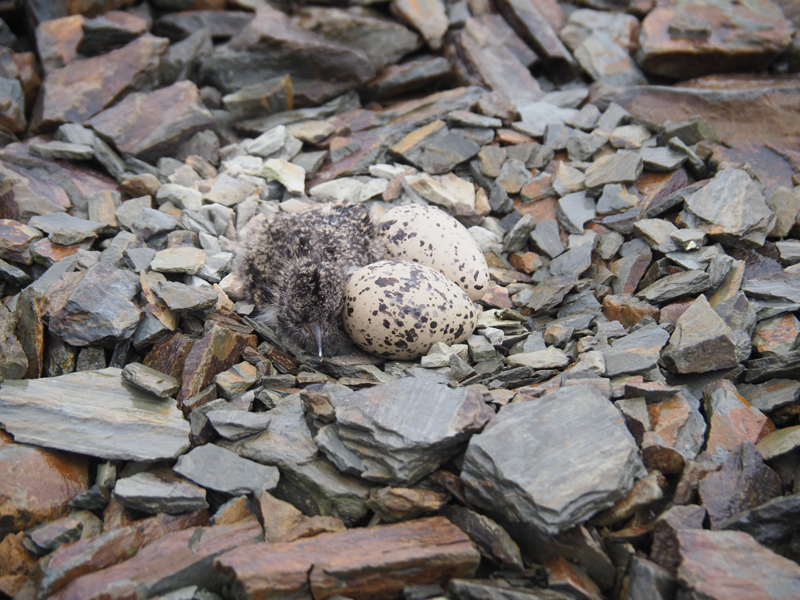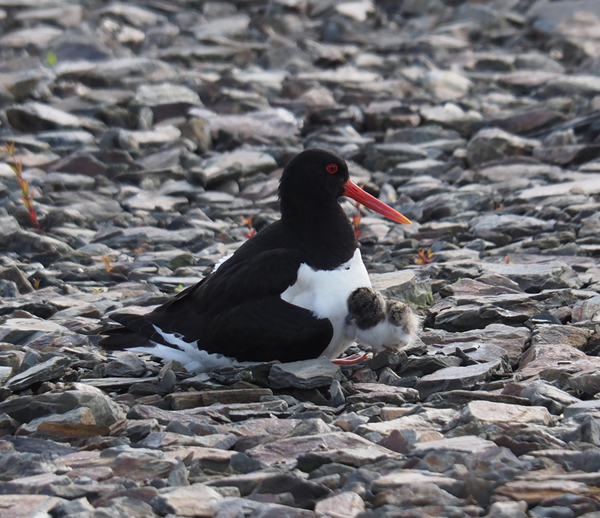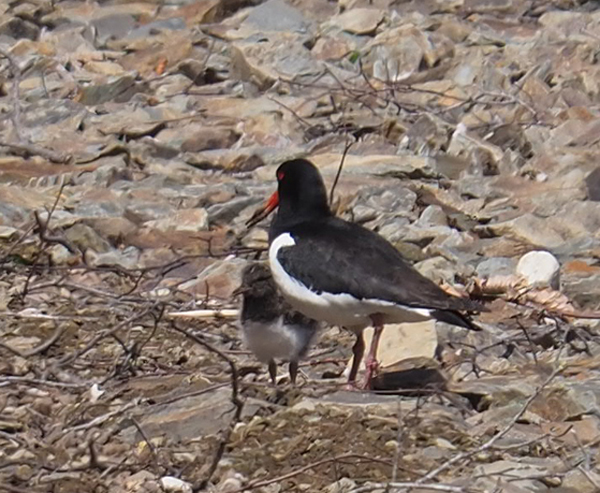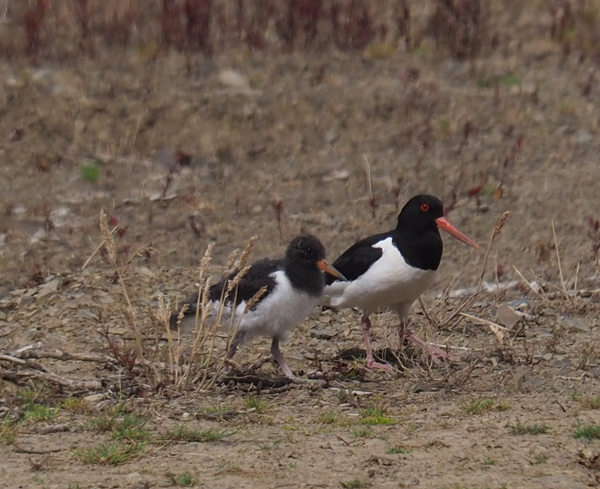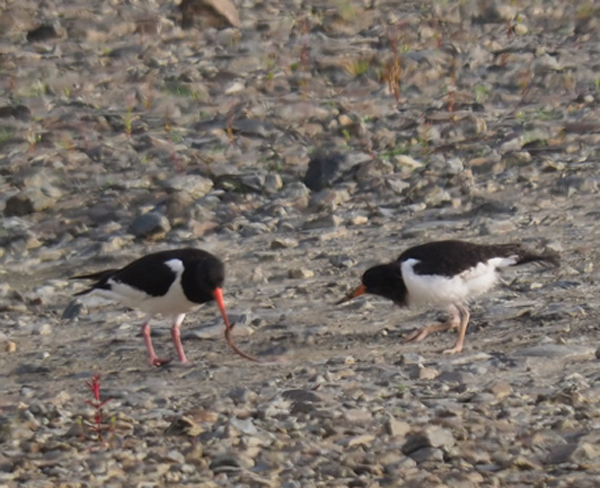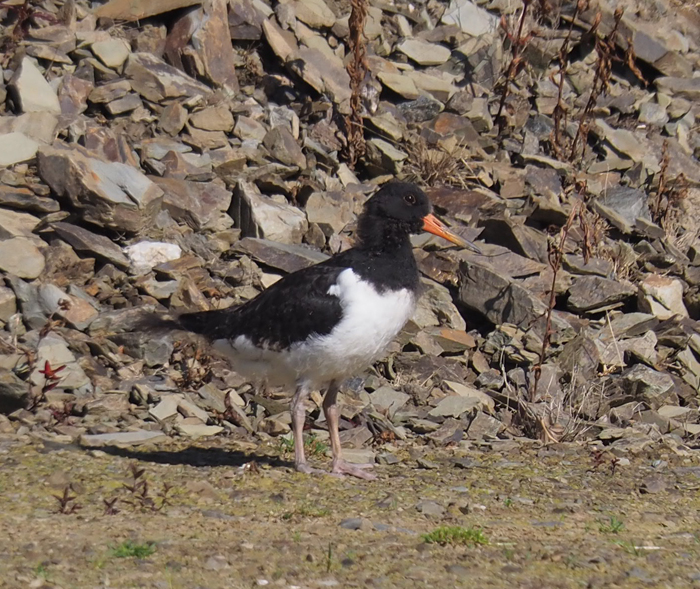The Protection of an Oystercatcher Nest.
This is the Working Pointer Blog and I am writing about Oystercatchers here because I was very inspired when I worked my pointers on a grouse moor in Angus Glens last year. Out there the ‘keepers are hard at work keeping as many carrion crows away as possible. I have spent many hours with the dogs on the moor and the managed moor is teeming with birds, especially with waders. There are curlew, lapwing, oystercatchers and snipe. It is an absolute eye opener to see how big a difference the lack of carrion (or hoodie) grows make.
I live in rural Aberdeenshire and across from our house is a huge big farm that mainly grows potatoes, turnip, carrots and grain. They have a massive factory for storing and packing the vegetables and around this building is a big stony hardcore drive/parking area.
I had noticed that a pair of oystercatchers seemed to be around, but not with a nest at a time where other oystercatchers were already having chicks. I studied them for a while and noticed that they were mating, so I kept an eye out to see if eggs would appear. And they did. At the end of June, I found the nest with three eggs.
I set to work on this because hoodie crows LOVE eggs and there were crows absolutely everywhere. Once you get your eyes opened to it, you see a pair of hoodie crows in every field in the spring time around here. In the old days every farmer had a gun and would keep a reasonable lid on the population. For some reason, probably mainly due to the much more stringent gun licence laws now adays, most farmers don’t have a gun. Also, it is a lot of work to trap birds when you have a whole lot of other stuff to do. Hence the crow population is expanding at the cost of other birds. Hoodie crows have an amazing talent for survival. Their main food is worms and grubs from the fields, but while they sit in a tree, or on their nest, they make use of their intelligence and they quietly work out where other birds are building their nests. Once they have worked that out, they just go and raid the nest for eggs or chicks.
An area with several nesting oystercatchers can hold their own against crows, even when there are a few of them, but this pair of birds stood no chance against even a handful of hoodie crows hungry for eggs. One pair of oystercatchers can handle one or two hoodies on attack and that was the situation I managed to achieve.
In about a square mile around the oystercatcher nest I despatched of 62 hoodie crows and to my delight, my oystercatcher pair managed to protect their three eggs till hatching time.
Sadly two of the chicks succumbed in the first couple of days, but apparently it is rare that oystercatchers manage to get all three chicks on the wing. So having got one chick up and going was such a lovely thing to see. This chick is now 32 days old and almost as big as mum and dad.
I checked on the pair every day they were on the nest and I have been to see the chick every day, which means I have been to check on this situation over 60 times. Add to that my days out with traps and rifle, all very time consuming. Crazy you may say, but you become very attached. This wader species is having a tough time for various reasons. They are naturally adapted to live on the coast and use the tide waters that wash up seaweed under which they find crustaceans. They also live off earth worms from the fields near the sea. But life by the seaside is not what it used to be. One of the biggest threats to the birds in the breeding season is the dogs on the beaches. The chicks are on the ground and can’t fly for the first 35 days and they are very easy game for dogs even if they just get disturbed and not killed.
Therefore some have found that inland nesting is better.
The pair I helped along found the big area around a modern farm factory to be quite like a beach and very attractive for nesting. The perfect colour for the chics’ camouflage.
Here is the story in photos:
I am afraid it took a bit of this.
Patiently the parents took turns to incubate the three eggs, day and night.
All three chicks hatched in peace without carrion crows getting near the eggs. Sadly two perished shortly after hatching, but that is quite normal.
The parents put all their efforts in to the one chick and he grew to full size.
Chick with mum or dad out to feed.
So hopefully he will return some day with a wife and add to the oystercatcher population on the farm.
-
04/12/2019 15:40
The Need for Good Dog Beds When You Travel in Winter.
Last week I had two days of mixed hunting out west. I travelled with my two pointers in the back of the truck on a huge, <a href="https://www.tuffies.co.uk/bespoke-service">bespoke size Tuffies dog bed</a>. No chill from.. -
17/02/2021 12:08
Moor Snakes
Last September I had my first dog-encounter with an adder. I was working my pointers on a grouse moor in Scotland and we had walked a good, long way away from the vehicles. In fact there ..

